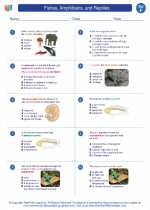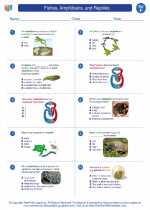Plains
A plain is a broad area of relatively flat land. It is characterized by low relief and minimal variation in elevation. Plains can be found on every continent and cover a significant portion of the Earth's land surface.
Formation of Plains
There are various processes that can lead to the formation of plains, including:
- Deposition: Plains can be formed by the deposition of sediments by rivers, glaciers, or wind over long periods of time.
- Erosion: The gradual wearing down of the Earth's surface by water, wind, or ice can create plains.
- Tectonic activity: The movement of tectonic plates can create plains through processes such as subsidence or uplift.
Types of Plains
There are several types of plains, each formed by different geological processes:
- Alluvial Plains: Formed by the deposition of sediment carried by rivers.
- Coastal Plains: Located along coastlines and formed by the deposition of sediments by ocean currents and waves.
- Glacial Plains: Formed by the movement and deposition of glacial ice.
- Interior Plains: Found in the interior regions of continents and formed by various geological processes.
Importance of Plains
Plains are important for several reasons:
- They provide fertile land for agriculture and farming.
- They often contain valuable natural resources such as oil, natural gas, and minerals.
- They are often areas of human settlement and urban development due to their flat terrain.
Key Terms
It's important to be familiar with the following key terms related to plains:
- Relief
- The difference in elevation between the highest and lowest points in an area.
- Deposition
- The process by which sediments are dropped or laid down.
- Erosion
- The process by which the Earth's surface is worn away by natural forces.
- Tectonic Plates
- The large, rigid pieces of the Earth's lithosphere that move and interact with one another.
Study Tips
To master the topic of plains, consider the following study tips:
- Review the formation processes of different types of plains.
- Understand the importance of plains for human activities and ecosystems.
- Practice identifying different types of plains on maps or in geographic photographs.
- Learn and memorize the key terms related to plains and their formation processes.
◂Science Worksheets and Study Guides Sixth Grade. Fishes, Amphibians, and Reptiles
Study Guide Fishes, Amphibians, and Reptiles
Fishes, Amphibians, and Reptiles  Activity Lesson
Activity Lesson Fish, Amphibians & Reptiles
Fish, Amphibians & Reptiles  Worksheet/Answer key
Worksheet/Answer key Fishes, Amphibians, and Reptiles
Fishes, Amphibians, and Reptiles  Worksheet/Answer key
Worksheet/Answer key Fishes, Amphibians, and Reptiles
Fishes, Amphibians, and Reptiles  Worksheet/Answer key
Worksheet/Answer key Fishes, Amphibians, and Reptiles
Fishes, Amphibians, and Reptiles  Worksheet/Answer key
Worksheet/Answer key Fishes, Amphibians, and Reptiles
Fishes, Amphibians, and Reptiles  Vocabulary/Answer key
Vocabulary/Answer key Fishes, Amphibians, and Reptiles
Fishes, Amphibians, and Reptiles  Vocabulary/Answer key
Vocabulary/Answer key Fishes, Amphibians, and Reptiles
Fishes, Amphibians, and Reptiles  Vocabulary/Answer key
Vocabulary/Answer key Fishes, Amphibians, and Reptiles
Fishes, Amphibians, and Reptiles  Vocabulary/Answer key
Vocabulary/Answer key Fishes, Amphibians, and Reptiles
Fishes, Amphibians, and Reptiles  Vocabulary/Answer key
Vocabulary/Answer key Fishes, Amphibians, and Reptiles
Fishes, Amphibians, and Reptiles 

 Activity Lesson
Activity Lesson
 Worksheet/Answer key
Worksheet/Answer key
 Worksheet/Answer key
Worksheet/Answer key
 Worksheet/Answer key
Worksheet/Answer key
 Worksheet/Answer key
Worksheet/Answer key
 Vocabulary/Answer key
Vocabulary/Answer key
 Vocabulary/Answer key
Vocabulary/Answer key
 Vocabulary/Answer key
Vocabulary/Answer key
 Vocabulary/Answer key
Vocabulary/Answer key
 Vocabulary/Answer key
Vocabulary/Answer key

The resources above cover the following skills:
LIFE SCIENCE
From Molecules to Organisms: Structures and Processes